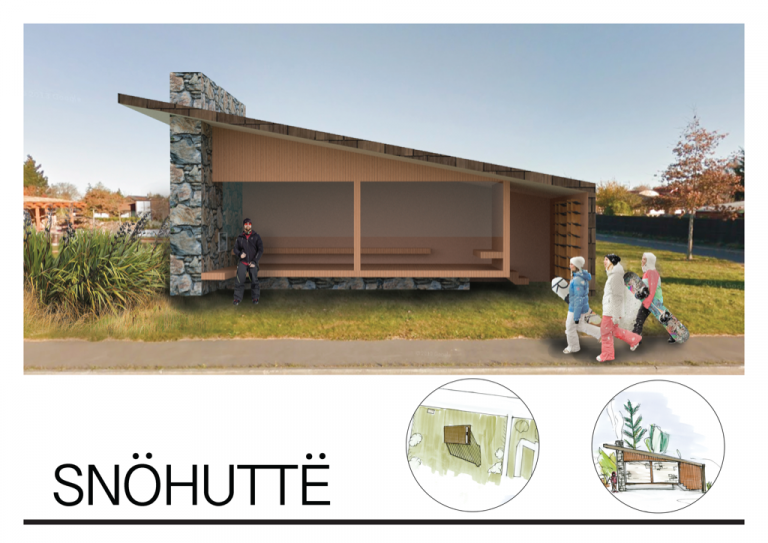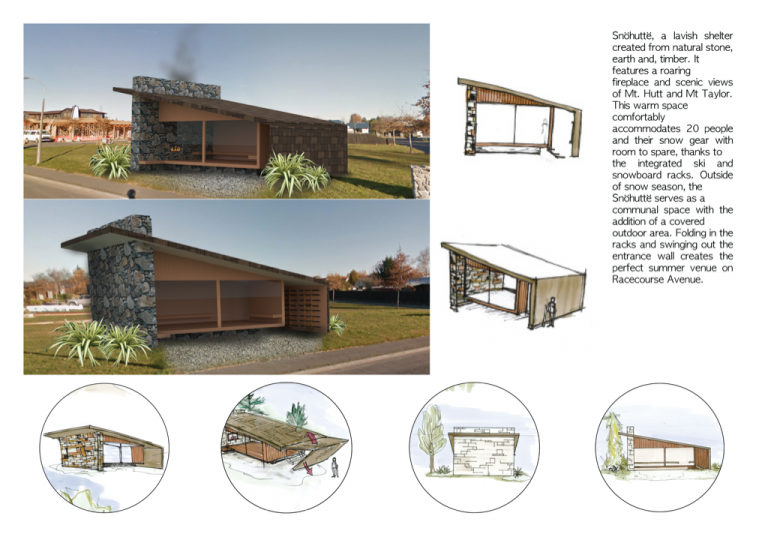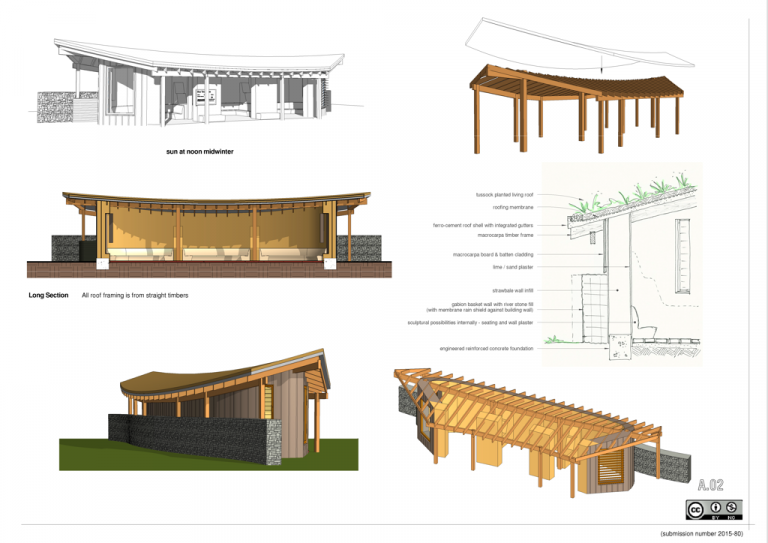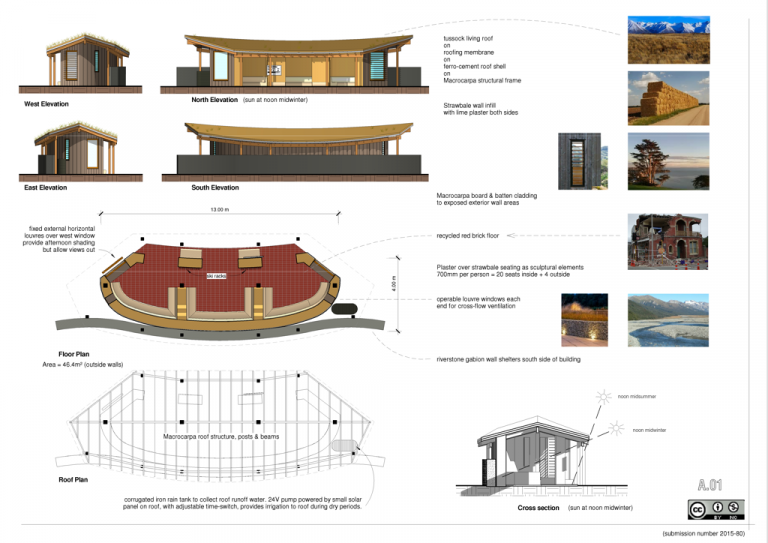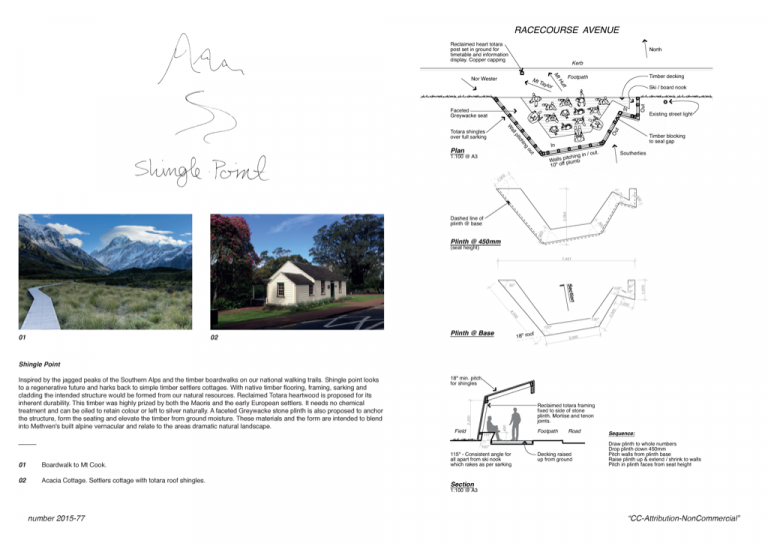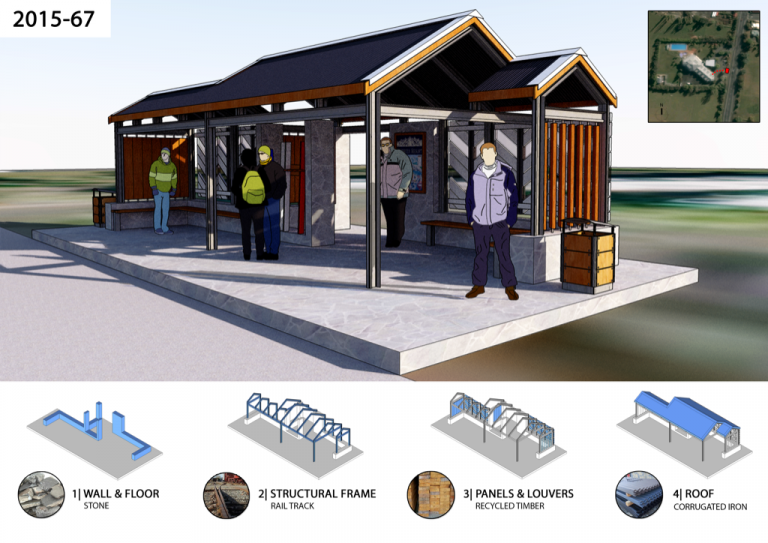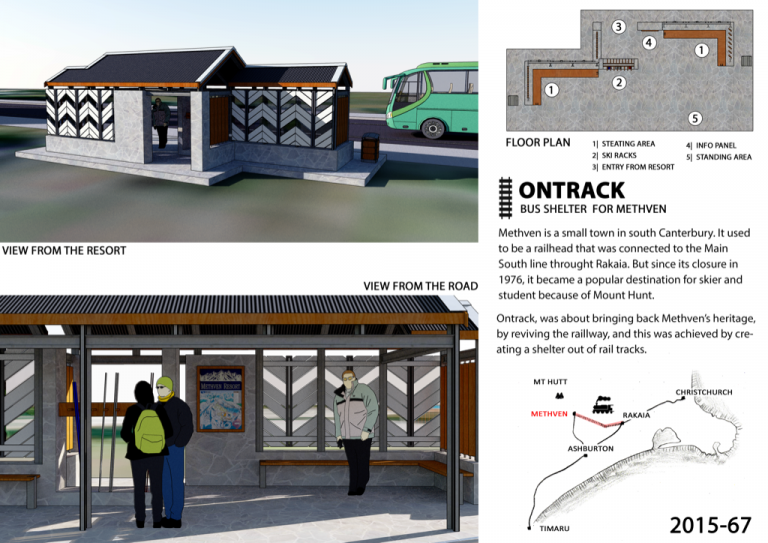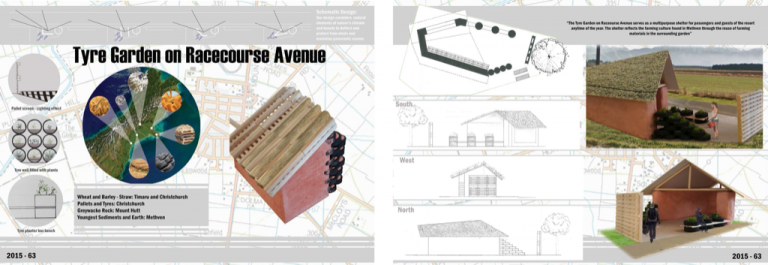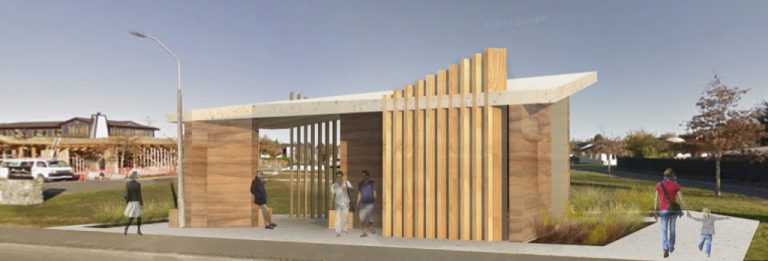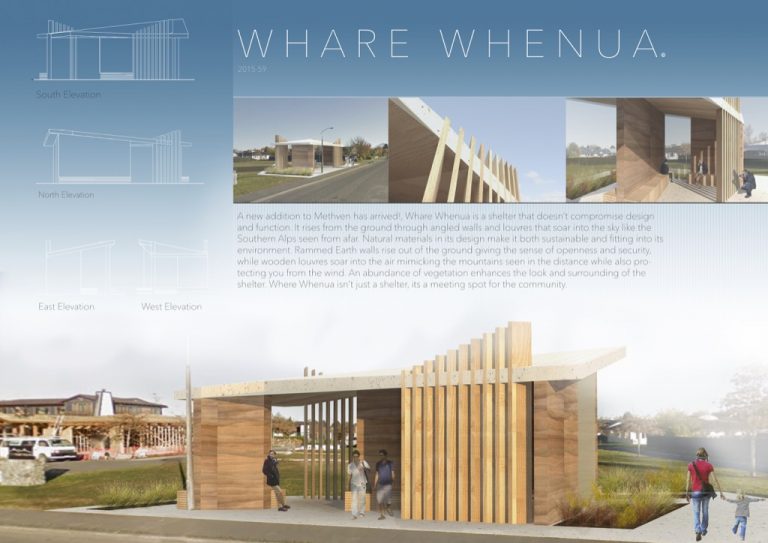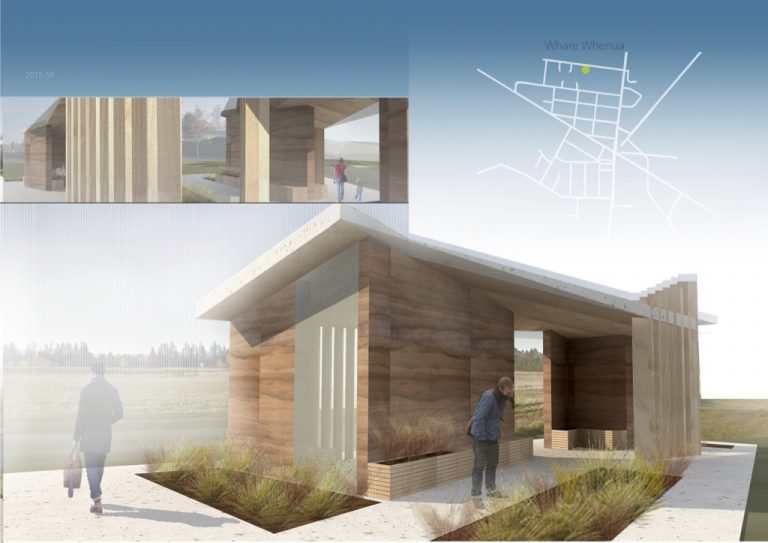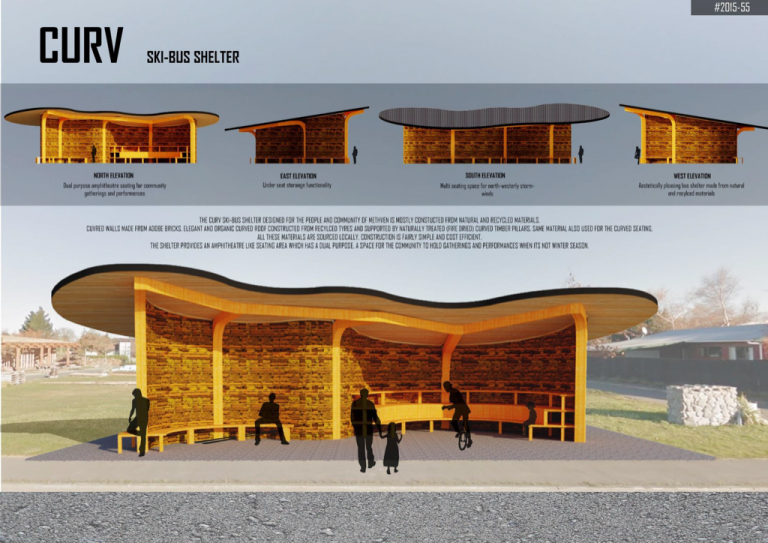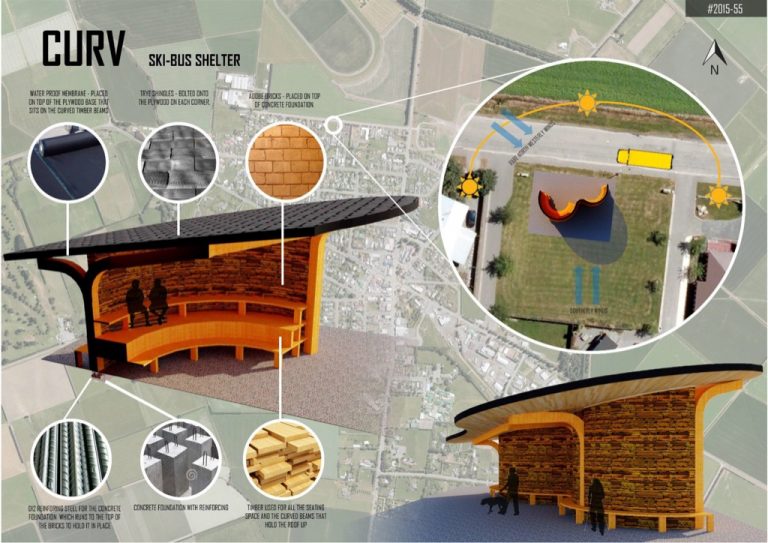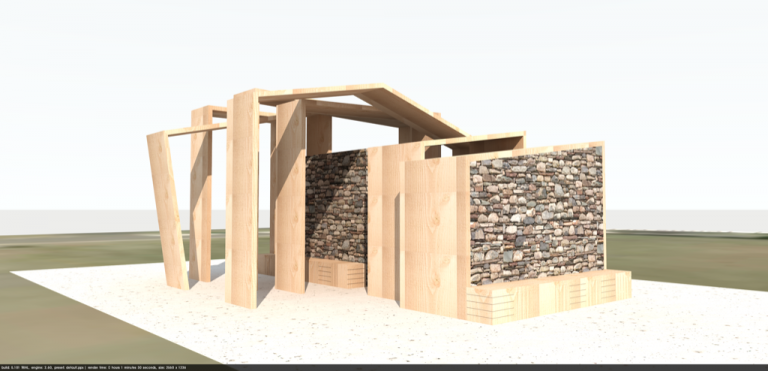Snöhuttë is a bus shelter located on the out skirt of Methven, 47 Racecourse road, besides Ski Time resort. Its primary function is to serve as a shelter for tourist and locals waiting to head out to the local mountains for winter activities via bus transport. The shelter comfortably accommodates 20 travellers and their gear, whilst keeping them warm courtesy of the fire place within the feature wall that also doubles as a chimney. The shelter can also function between winter seasons as a communal space by transforming the entrance wall to create an additional covered outdoor area. Materials used to create the shelter are natural stone for the base and feature wall, rammed earth southern wall, and pine timber to create the inhabitable spaces with north facing glass windows. The sloped roof prevents snow from collecting on the roof, the covered entrance way provides an intermediate transition that combats the strong north westerly winds, and rest of the shelter is completely sealed to combat wild weather conditions of Methven.
